





Dogs
How to Trap a Dog
Live traps are extremely useful tools used for many purposes, including reuniting lost dogs with their owners and rescuing strays. Below, Havahart® outlines how to humanely catch a dog as well as expert tips to make the process quick, safe and easy.
1 Make Arrangements
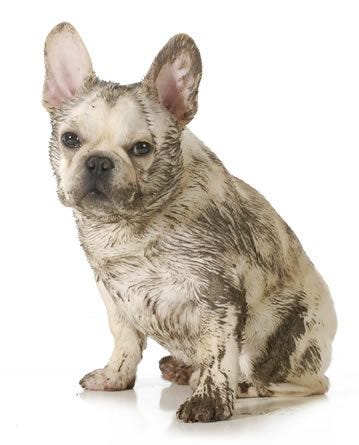
Before attempting to capture a stray or feral dog, it's important that you make the proper arrangements to care for the dog when he's in your custody.
- If you plan to neuter/spay and vaccinate a feral dog, call your local veterinarian or animal clinic to make an appointment.
- If you plan to capture a stray dog, be prepared to locate his owner immediately.
- Prepare a comfortable, quiet and safe indoor holding area where you will care for the dog while he recovers from surgery or while you search for his owner.
- Purchase dog food as well as feeding/water bowls.
- Make sure you have the proper help and/or vehicle for safely and comfortably transporting the dog.
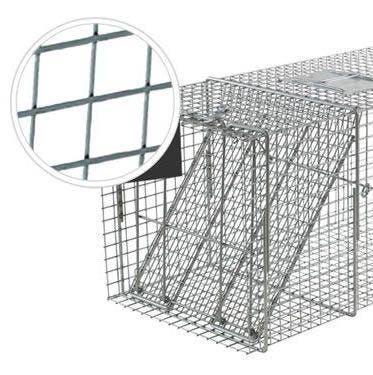
2 Choose a Dog Trap
The best live traps for dogs are oversized, safe and extra durable. Important criteria to consider include:
- Size: A trap should be big enough to enclose the entire dog - head and tail. An oversized trap, at least 42" long and 15" wide is best for small or medium-sized dogs.
- Safety: Internal trap edges should be rolled and smoothed to keep animals comfortable and safe from injury.
- Strength: Wire should be at least 12 gauge steel, and the trap handle should be strong enough to support the weight of a dog.
3 Determine Trap Placement
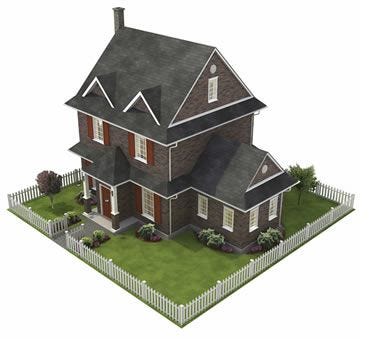
The location of your trap will depend on the dog you are trying to capture and his daily habits. The trap should be placed in an area the dog frequents for food, or near his den or hiding place.
Ideal trap locations include:
- at a feeding site the dog visits regularly
- nearby a major food source, like a garbage dump
- in an area where activity or damage is evident
- outside the hiding place or shelter of a stray dog
- outside of a feral dog's den
4 Bait Your Trap
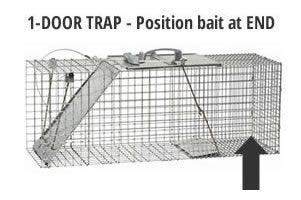
- Use boneless, cooked baits that won't easily spoil.
- If capturing a pet dog, try adding a favorite toy or blanket.
- Place or scatter the bait directly behind the trip plate to encourage the dog to step on the plate.
- Keep the bait as far from the trap walls as possible to avoid it from being stolen.
For more bait information and expert tips, read How To: Dog Baits »
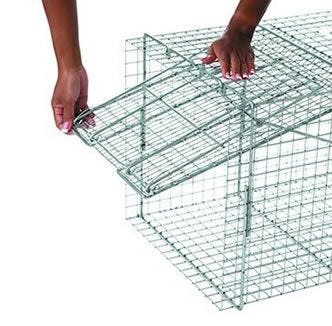
5 Set Your Trap
The best time to set your trap is at dusk, when dogs feel most comfortable coming out of their dens to forage for food. Do NOT set your trap in harsh weather conditions like extreme cold, heat, wind, rain or snow.
When you are ready to catch your dog, carefully and securely set your trap to the open position. Always follow your trap's unique instructions to ensure a proper set.

6 Monitor Your Trap
If neglected inside of a cage, a dog can quickly become anxious, hungry or thirsty, and fall victim to ticks, fleas, predators and other harmful variables.
It is absolutely critical that the trap is monitored until a successful capture is made. You should never leave a dog trapped for a long period of time.
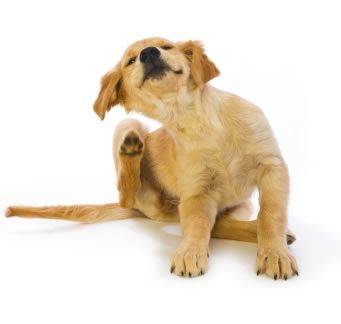
7 You've Caught a Dog!
- Wear heavy protective gloves and have another person help you transport the trap to a safe holding area.
- Drop a blanket or cloth over the trap to keep the dog calm.
- Be very gentle when handling the trap, and keep it level and steady.
- If you are caring for a stray or feral dog for a period of time, make sure that he receives sufficient food and always has water.
Expert Tips
- Before setting a live trap, be sure to understand your local trapping laws.
- If you are having trouble determining a location for your trap, it may help to establish a feeding pattern to better predict the dog's behavior. Leave food outside in the same area day after day until the dog gets used to feeding in that location. Then position your trap in that same area, place the food inside, and tie it open so it cannot close. Once a dog begins to get comfortable with feeding inside the trap, you can bait it and set it for a catch.
- Place your trap on a flat, level surface. If a flat surface isn't available, secure the trap to a wooden plank or board.
- Unset your trap at times when you are unavailable to monitor it.
